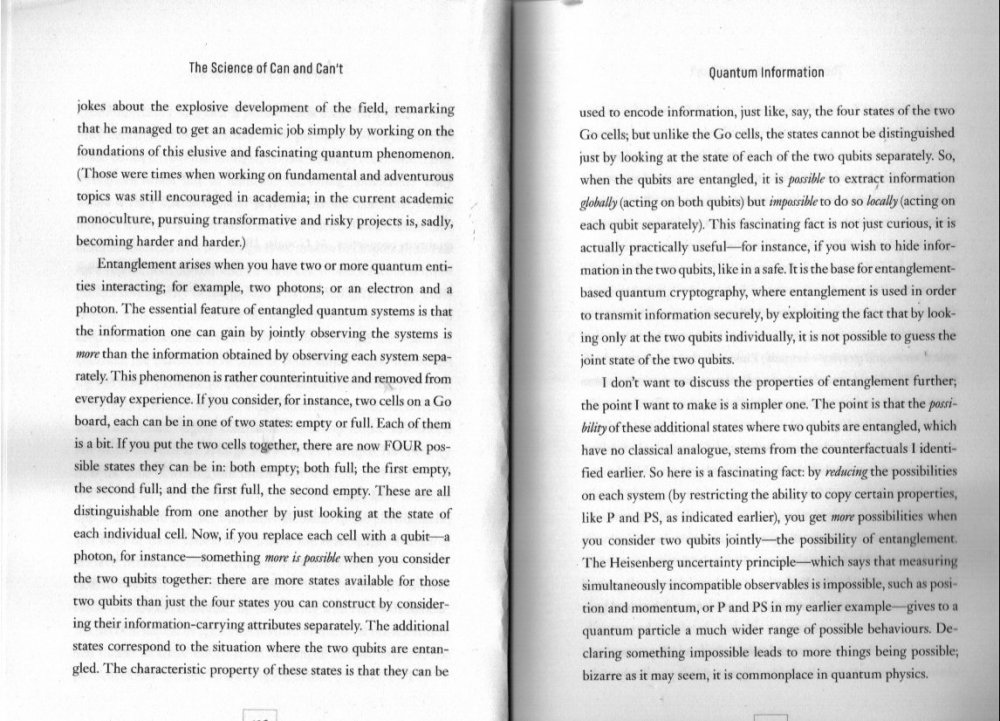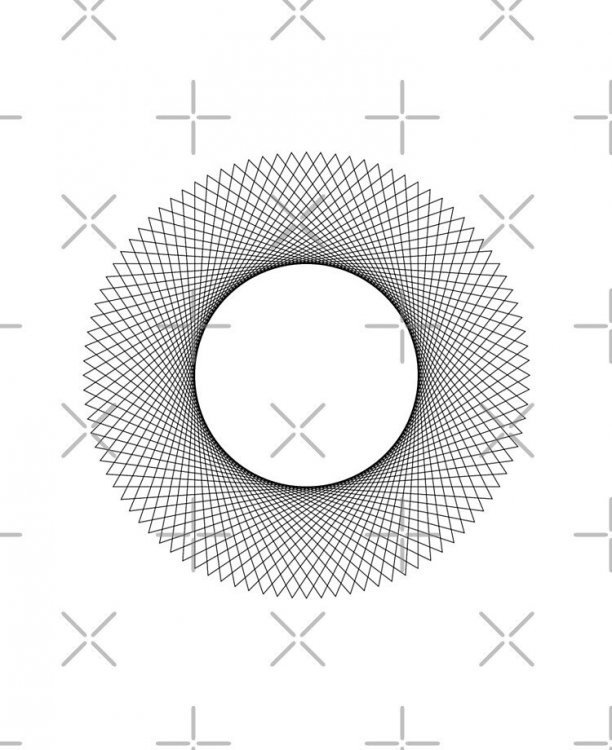-
Posts
18316 -
Joined
-
Last visited
-
Days Won
104
Content Type
Profiles
Forums
Events
Everything posted by studiot
-
Please confirm that the bellshaped top will only screw onto the knurled bottom as shown in the left hand picture. As shown it would be pretty useless as a drawer handle but if it would scew on the other way up it might be as iNow suggests. Otherwise perhaps it is a pair of brass paperweights from a desk, perhaps originally made as an apprentices's 'Master' piece.
-

The relationship between the quantum and the classical
studiot replied to geordief's topic in Modern and Theoretical Physics
And your justification for this statement is ? -

The relationship between the quantum and the classical
studiot replied to geordief's topic in Modern and Theoretical Physics
That is still a matter of open debate in the scientific world. -

Velocity and acceeration [ Vector calculus with applications ]
studiot replied to Dhamnekar Win,odd's topic in Homework Help
Well done +1 -

The relationship between the quantum and the classical
studiot replied to geordief's topic in Modern and Theoretical Physics
Exactly why I suggested you narrow down the question. Swansont clearly had similar ideas in asking for specific examples. To be general about your question I would say that too much distinction is made between 'quantum' and 'classical'. A system has certain behaviours which are driven by or influenced by specifc properties. Those specific properties may have no influence at all on other behaviours of the system where you would need to invoke other different properties as appropriate. Sometimes these properties will be quantum in origin, sometimes classical and sometimes the boundaries will be blurred. There is no reason preventing that both quantum and classical properties being involved. Two perfectly respectable classical objects, a hydrogen atom and an iodine atom, approach each other, a respectable classical action. But if that approach is too close then a quantum property is brought into play and the atoms 'bond' together. Classical macro Chemistry is based on this. In the macro world, more complicated macro unions can arise with quantum properties. Chemists call these Ligands. Conversely Physicists distinguish metals and semiconductors, whose behaviour relies heavily on the quantum properties of the constituents. So you can have your electronic devices. -

The relationship between the quantum and the classical
studiot replied to geordief's topic in Modern and Theoretical Physics
I think you need to cast some more bread upon the waters or fish with a finer net. The scope of your proposition seems too wide to me. There are lots of different reasons why analysing the behaviour of a large aggregate may introduce additional features non existant or negligable in small ones. -
Well you introduced the wavefunction which is the dependent variable in the (Schrodinger et al) equation but it does not depend upon the spin quantum number so I would not expect that to be represented. I mus say again, thanks to all, this discussion is helping me with my thinking about entanglement.
-
No it just demonstrates my point which was that the posting a picture on social media can actually work, but this was a practice you condemned
-
I'd say this is just wrong, and not borne out by experience. Firstly it encourages the perpetrator (dog owner) not to bother sorting his/her problem as someone else will do it. Secondly posting an indignation picture definitely works and produces results. https://www.bbc.co.uk/news/uk-scotland-glasgow-west-58887591
-
Definitely some interesting thoughts here and I do appreciate that you you are trying to connect via an abacus or something but I fear that brevity may have klead to some abiguity. If at all possible I would appreciate amplification of the following points. For what purpose do you 'need to know' these facts ? How does that affect the ongoing entanglement? Yes, depending upon what you mean by 'non separability'. If you mean what swansont said ie that you cannot analyse the system as two independent parts agreed. But if you mean you can't physically separate the parts, thereby breaking the entanglement, the no of course you can break the entanglement. That would correspond to the MO method, but surely the LCAO method is a linear proportion sum of the respective parts ? Strictly you do not need to know all the quantum numbers, just the spin number of one electron. But then you would not have identified the orbital, just the entanglement. I seem to have commited the same brevity sin I accused Markus of.
-
I don't think I will be buying this book, but I am trying to dig out notions worthy of development for discussion. In particular I am offering my thoughts on what Dr Marletto might be trying to say. In particular the efficiency of boundary element calculation v those of finite element calculation is well known and documented. But I may be wrong that her thesis is an spect of that. I also think you have turned her argument around, perhaps my fault for giving the wrong impression. So thank you for making me recheck what I am getting out of this book. Edit that's twice just now I've lost connection to the site ( and written work) so I'm giving up for tonight.
-
doesn't really cut it. Particularly severely for spin. Really looking forward to continuing this discussion. You have just proved my point, that there is lots of disagreement about this subject. https://www.google.co.uk/search?q=are+electrons+in+a+bonding+orbital+entangled&source=hp&ei=bVxnYbGlMceblwS5yaCgDw&iflsig=ALs-wAMAAAAAYWdqfdSeHIMROWYCAzROmBYTFdDwWbqq&ved=0ahUKEwjxj-rQtsjzAhXHzYUKHbkkCPQQ4dUDCAg&uact=5&oq=are+electrons+in+a+bonding+orbital+entangled&gs_lcp=Cgdnd3Mtd2l6EAM6CwgAEIAEELEDEIMBOg4ILhCABBCxAxDHARDRAzoOCC4QgAQQsQMQxwEQowI6CAgAEIAEELEDOhEILhCABBCxAxDHARCjAhCTAjoICC4QgAQQsQM6BQguEIAEOgsILhCABBCxAxCTAjoFCAAQgAQ6BQgAELEDOggILhCABBCTAjoICAAQgAQQyQM6BQgAEJIDOgYIABAWEB46BAgAEAo6CAghEBYQHRAeOgUIIRCgAToHCCEQChCgAVCGF1jQlAFguJcBaABwAHgAgAG-AogByCaSAQgzMC45LjQuMZgBAKABAQ&sclient=gws-wiz Fair statement.
-
So the title gives the topic for discussion. Here is my introduction. An entanglement occurs when at least two bodies posses properties where observation (interaction) of that property value on one body (automatically) identifies the property value on the other body. A classical example would be a bag containing one red and one blue ball. Withdrawing one ball would automatically identify the colour of the ball left in the bag. But knowing the temperature one the one ball would not tell you anything about the temperature of the other ball. A quantum example would be two electrons in a covalent bond. Knowing all the quantum numbers of one electron would automatically define all the quantum numbers of the other electron. (Pauli) Please add whatever you think appropriate to the discussion or ask questions.
-
Thank you both for these replies. I have not said that I agree (or disagree) with the lady, but I would be very suprised if Oxford University was barking up a tree as far from the physics forest as you seem to suggest. In particlar I am finding many of the examples given in the book questionable. But this is a Science forum and this thread seems to be the only one actually discussing Science at the moment. As regards entanglement, that is only one part of it and I do not fully agree with you guys there. But then the lady herself indicates that experts disagree on aspects of the subject. So I have started a new thread specifically about entanglement for deeper discussion and to avoid derailing this thread with side arguments.
-
+1 What the difference between crude oil and refined oil ? Crude oil gushes out of the ground screaming "knicker. knickers, knickers" Refined oil gushes out of the refinery screaming "panties, panties , panties"
-
Hear hear. +1
-
Thank you for your interest. +1 I have not read just over halfway through the book so I am no expert, but here is what the lady says about quantum entanglement, including the difference between quantum entanglement and classical entanglement. Halfway through and my impression is the book contains too much chit chat. So ideas behind it seem to get rather lost in the noise. Also there are some non intuitive definitions (as always seems to be th case) to get one's head around. Factuals and counterfactuals are a case in point. They seem to be defined as follows Factuals are statments, backed by obervations, of physics phenomena that we know have actually happened/ can actually happen / will actually happen. So yes they could be conservation laws. So I suppose they are direct staements about a phenomenon. Counterfactuals come in two formats. They are statements that are not forbidden, but have never actually happened ie they could happen, given the right conditions. Or they are statements expressly forbidding something for instance the impossibility of a pertual motion machine. So I suppose that they are indirect statements about a phenomenon. The claim is that current Physics is heavily slanted towards factuals. But (in some cases) it is easier to work in terms of counterfactuals. I am not sure about some of the examples given, but it reminds me of the fundamental theorem of calculus that relates interior properties of a region to the boundary properties. Here is my simple example Factual To draw a circle, fix one end of a string at a centre, pull it tight and rotate the other end about that point. Counterfactual. Use the string to do some curve stitching of the tangents and the result will be a circle
-
No. You offered a link to another website. The rules here explicitly state that matters fundamental to the discussion (for example basic definitions) must be posted here. Members should not have to go offsite to find information. It is OK to provide links to further develop the subject for those interested enough, or a link to something like a table of scientific facts. Such a table that for instance would tell me that there are two protons in a helium atom or the charge on the electron in coulombs. Here are a couple of such scientific facts. Our best estimate of the age of the universe is currently 14 billion years or 4.5 x 1017 seconds https://en.wikipedia.org/wiki/Age_of_the_universe Our best estimate of the time after the initial detonation of 'the big bang' during which there may have been not even fundamental particles is 10-43 seconds. https://www.physicsoftheuniverse.com/topics_bigbang_timeline.html Note these 'facts' are less reliable than my first two examples, but let us run with them in relation to complexity. In addition to scientific facts we have scientific observations. One such is that, as far as we can see the Universe looks pretty much the same in all directions on average. Now we know that because light takes time to reach Earth, the further away in distance we look the further back in time we are seeing the universe. This tells us that all those atoms, molecules etc existed as far back as we can look in time. So for the first insignificant time of 10-43 seconds the universe had no atoms etc but for the rest of its history there has been little change in composition and therefore complexity. I am only continuing this because there is a germ of a really interesting topic involved, but feel free to ask for more information. That process is called discussion.
-
Poland stokes fears of leaving EU in 'Polexit' By Adam Easton BBC News, Warsaw Published 21 hours ago https://www.bbc.co.uk/news/world-europe-58840076 Tensions between Poland and the Eu escalates and the BBC article examines the possible eventual outcome>



